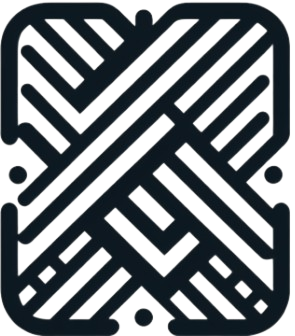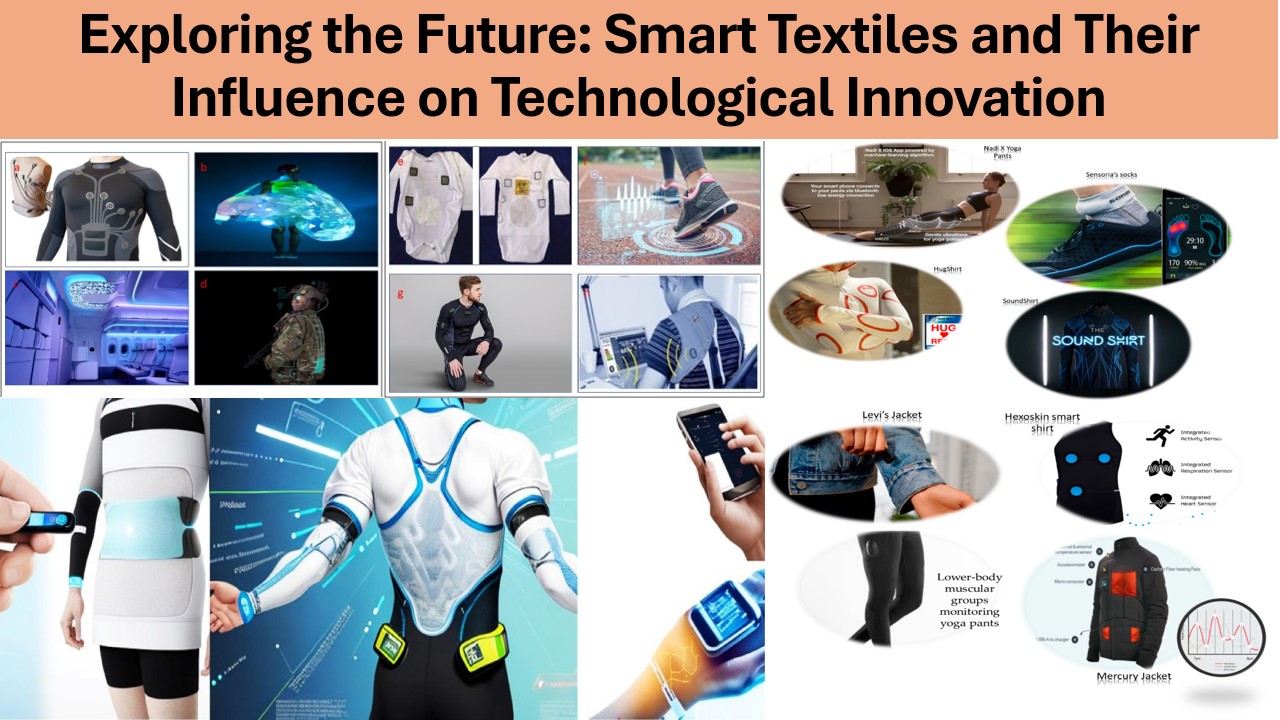Introduction to Smart Textiles
Smart textiles, or electronic textiles (e-textiles), are fabrics embedded with digital components such as sensors, actuators, and conductive fibers. These advanced textiles are capable of sensing and responding to environmental stimuli, providing functionality far beyond traditional garments. Smart textiles result from collaborative advances in textile engineering, electronics, computer science, and materials science.
Classification
- Passive Smart Textiles: Detects external stimuli without active response. Example: Outlast® Technology, which uses phase-change materials to absorb, store, and release heat, is integrated by brands such as Serta and Timberland.
- Active Smart Textiles: Respond dynamically to environmental input. Example: Levi’s Jacquard by Google allows users to control their smartphones via touch-sensitive jacket sleeves. ShiftWear sneakers, using embedded e-ink displays, can change design or color on demand.
- Ultra-smart Textiles: Not only sense and react, but also adapt and learn from the environment.
Current Trends in Smart Textile Innovation
1. Wearable Technology and Fashion Integration
Integration of smart sensors, actuators, and interactive technology is prominent in apparel:
- Tommy Hilfiger Xplore Collection integrates Bluetooth chips to track user activity and reward engagement.
- Samsung Galaxy Smart Ring and Oura Ring employ minimalist design to monitor sleep, heart rate, and movement.
- ShiftWear Sneakers display customizable, animated visuals on fabric through a connected app.
- Advances in textile-based electronics have prompted emerging generations of wearable products, ranging from attachable sensors (first generation) to fully integrated, responsive garments (third generation).
2. Healthcare and Biomedical Applications
Smart textiles are enabling continuous, real-time health monitoring and medical diagnostics:
- Hexoskin shirts track ECG, breathing rate, and motion for telemedicine and athletic purposes.
- Sensoria and Myant offer smart socks and shirts for cardiac monitoring via textile-based electrodes.
- KOB GmbH produces pressure-sensing bandages and medical wraps for wound management.
- Recent developments focus on biosensor integration within apparel, capable of measuring glucose, lactate, pathogens, and pollutants in real time.
- Smart compression garments automatically control pressure to treat lymphedema and similar conditions.
3. Sustainability in Smart Textiles
Eco-friendly smart textiles are increasingly adopted:
- Stella McCartney uses recycled and biodegradable fibers in temperature-regulating, moisture-wicking smart clothing.
- Other brands, like Adidas and Patagonia, are pioneering circular design and integrating smart functions with minimal environmental impact.
- Reviews emphasize sustainability as a guiding trend in smart textile innovation.
4. Military and Defense Applications
Smart textiles enhance safety and operational performance in defense:
- BAE Systems’ Broadsword Spine employs conductive fabrics to distribute power and data in tactical vests, removing the need for traditional wiring.
- U.S. Army projects and companies like EmbroTech are developing adaptive camouflage and biometric tracking uniforms.
- Exoskeletons and advanced military gear are leveraging embedded textile-based sensors for real-time health and fatigue monitoring.
5. Sports and Athletic Wear
Smart textiles are revolutionizing athletic performance and recovery:
- Athos uses integrated EMG sensors in wearable apparel to provide detailed muscle activation data for optimizing workouts.
- Under Armour Athlete Recovery Sleepwear reflects infrared energy for faster muscle recovery.
- Sensoria Smart Socks monitor running technique and deliver gait analysis using textile-integrated pressure sensors.
- EyeCan Swim offers sonar-based feedback headbands for visually impaired swimmers.
- Current research focuses on robust, flexible, and washable textile-based sensors for sports and fitness.
6. Other Emerging Commercial Applications
Startups and research labs are expanding the scope of smart textiles:
- MesoMat produces ultra-flexible conductive fibers for diverse textile applications.
- Viture One Smart Glasses utilize fabric tech in wearable headsets for AR media projection.
- MIT Media Lab’s 3DKnITS showcase novel fabrication of knit textiles that sense user posture and movement with high precision.
Cross-Sector Applications Table
| Industry | Application Example | Commercial Product or Brand |
| Fashion | Wearables with color-changing or interactive capabilities | ShiftWear sneakers |
| Healthcare | Real-time biometric, ECG, or compression monitoring | Hexoskin, Sensoria, Myant |
| Military | Adaptive, sensor-equipped uniforms and gear | BAE Systems’ Broadsword Spine |
| Sports / Fitness | Performance analytics, recovery enhancement, safety for athletes | Athos, Under Armour, Sensoria |
| Consumer | Daily health tracking, mobile interaction, productivity | Samsung Galaxy Smart Ring |
Challenges and Opportunities
Despite rapid growth, smart textiles face hurdles:
- High production costs hinder large-scale adoption, but advances in printable electronics and nanotechnology are reducing expenses.
- Limited consumer awareness slows uptake. Educational outreach is vital for widespread adoption.
- Regulatory and technical standards are required for safety, durability, and privacy.
Recent Research Highlights
- Comprehensive bibliometric mapping emphasizes the surge in global research and patent activity in smart textiles.
- Reviews focus on advanced integration technologies, sustainability, wearable biosensors, and applications across industries.
- Studies highlight breakthroughs in textile-based biosensors and electrochemical sensors for sweat and metabolite analysis.
- Innovations in shape-morphing materials, actuation, and energy harvesting are rapidly emerging.
Conclusion
Smart textiles are at the forefront of material and wearable technology innovation, with growing impact across fashion, healthcare, defense, and beyond. The integration of digital sensors, sustainable materials, and adaptive systems is transforming traditional textiles and creating new opportunities for personalized, data-driven performance and care. As research advances and costs fall, the next decade will likely see smart textiles become integral to daily life, driven by interdisciplinary progress and market adoption.
References
- Wang, Y. (2022). Research on flexible capacitive sensors for smart textiles. Journal of Physics: Conference Series, 2181(1), 012038. https://doi.org/10.1088/1742-6596/2181/1/012038
- Rudresh, H. M., & Das, R. (2022). Smart fabric textiles: Recent advances and challenges. Materials Today: Proceedings. Advance online publication. https://doi.org/10.1016/j.matpr.2022.02.250
- Tian, Y., Xu, L., & Wang, Y. (2022). Smart textiles using fluid-driven artificial muscle fibers. Nature Communications, 13, 425. https://doi.org/10.1038/s41467-021-27847-0
- Patel, M., Patel, R., & Upadhyay, S. H. (2023). Smart E-textiles: A review of their aspects and applications. Materials Today: Proceedings. Advance online publication. https://doi.org/10.1016/j.matpr.2023.07.199
- Arefin, A., Saha, A. K., Kabir, S. M. M., Rahman, M. H., & Hasan, M. M. (2023). Smart textiles: A review and bibliometric mapping. Results in Engineering, 18, 101020. https://doi.org/10.1016/j.rineng.2023.101020
- Hossain, M. R., Ahmed, M. R., & Alam, M. S. (2023). Smart textiles. Textile Progress, 55(2), 47–108. https://doi.org/10.1080/00405167.2023.2250651
- Allish, S., Suthiksha, P., Pachiappan, K. M., Sathiyam, R. D., & Saniya, A. (2024). A review on recent trends in smart textiles. World Journal of Advanced Research and Reviews, 24(1), 1824–1828. https://doi.org/10.30574/wjarr.2024.24.1.3103
- Hossain, M. T., Shahid, M. A., Limon, M. G. M., Hossain, I., & Mahmud, N. (2024). Techniques, applications, and challenges in textiles for a sustainable future. Journal of Open Innovation: Technology, Market, and Complexity, 10, 100230. https://doi.org/10.1016/j.joitmc.2024.100230
- Azeem, M., Shahid, M., Masin, I., & Petru, M. (2025). Design and development of textile-based wearable sensors for real-time biomedical monitoring: A review. The Journal of The Textile Institute, 116(1), 80–95. https://doi.org/10.1080/00405000.2024.2318500
Read More
- China’s Cotton Topping Robot: Revolutionizing Xinjiang’s Fields at 10x Speed
- Smart Garments for Elderly Health Monitoring and Active Living
- Call for Submissions: Share Your Expertise in Textile and Apparel
- Redesigning the Breath of Life: A Next-Gen N95 That Filters More Than Air
- History and Development of Suture
- Different Blending methods with their advantages and disadvantages
- The methods of measuring the thermal insulation and water vapor permeability of fabrics
- Six Sigma: A Comprehensive Guide to Process Excellence
- Transforming Textiles with Nanotechnology: Applications and Advances
- The Science and Innovation Behind Waterproof Breathable Fabrics
- Classification of Protective Textiles

